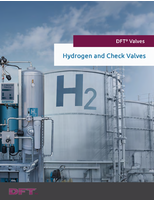PCB Piezotronics Complements World-Class Microphones with Superior Technical Support
What is the difference between externally polarized and pre-polarized microphones? How do you choose which type to use for your application?
Depew, NY - PCB Piezotronics, Inc., global leader in acoustic, vibration, pressure, force, and torque sensors, is pleased to complement its world-class microphone products with exceptional technical support.
David Rizzo, director of sales and marketing for PCB® microphone products, says PCB® microphone customers get more than just a great microphone. They get peace of mind because they know that they can consult our trained application engineers or engineers with PhDs in acoustics to ensure that they are using the most appropriate measurement tool for their application. This is all backed with a best in class five-year warranty in conjunction with our TCS (Total Customer Satisfaction) risk free guarantee.
"It's not always easy to determine which type of microphone to choose for each application," Rizzo says. "For example, most people understand the difference between externally polarized and prepolarized microphones, but they are not always certain which one to use for their application."
Both types work well in most applications, Rizzo explains, but the marketplace is quickly gravitating to prepolarized microphones because they offer the lowest system cost per channel, and are generally better suited for humid applications, since high humidity is more likely to short out traditional externally polarized microphones.
The modern prepolarized test and measurement microphone and preamplifier designs operate via ICP® sensor power utilizing a common 2-20 mA constant current supply, which is cost-effective and easy to operate. DAQ (Data Acquisition) manufacturers realize this is the future and are developing their new DAQ designs to incorporate this same 2-20 mA power which eliminates the need for external power supplies. The prepolarized design allows for the use of standard coaxial cables with BNC, 10-32 microdot® or SMB® connectors. Prepolarized designs are also more desirable in portable or handheld applications, for example sound level meters, where the 200V polarization power supply would be less desirable. The prepolarized design also saves setup time because it can be used simultaneously with ICP® accelerometers, force, strain or pressure sensors that have built-in electronics.
Externally polarized microphones, on the other hand, are better choices for high-temperature applications (between 120 and 150°C) because the sensitivity is more stable at temperature ranges greater than 120°C. It is important to note the limiting factor for high temperature applications is the required preamplifier. End users would have to isolate the preamplifier or have a preamplifier capable of this same temperature rating. There are specialty models, such as low noise (below 10 dB) that are only currently available in an externally polarized design.
Externally polarized microphones are the traditional microphone design. Externally polarized microphone setup requires the use of a separate 200V power source, which only powers externally polarized microphone sensors. This setup consists of seven-conductor cabling with LEMO® connectors and in some cases five-pin designs are used. In most cases, these are purchased to replace components in existing systems or where a prepolarized equivalent is not available.
PCB Piezotronics offers access to a wealth of acoustic measurement expertise in its microphone handbook, which is available for download on the PCB® website at http://www.pcb.com/MicrophoneHandbook.aspx?utm_source=&utm_medium=&utm_campaign=.
For technical information on our traditional externally polarized or the modern pre-polarized condenser microphones, contact Mark Valentino, Product Manager, at (716) 684-0001.
About PCB® Automotive Sensors Division
PCB Automotive Sensors is a dedicated sales and technical support facility, located in Farmington Hills, Michigan, devoted to the testing and instrumentation needs of the global transportation market. This team is focused on the development and application of sensors and related instrumentation for specific vehicle development test programs, including modal analysis; driveability; ride & handling; component & system performance; durability; road load data acquisition; vehicle and powertrain NVH; legislative testing; quality control; powertrain development; and motorsport. PCB® proudly stands behind all products with services customers value most, including 24-hour technical support, a global distribution network, and the industry's only commitment to Total Customer Satisfaction. For more information please visit www.pcb.com/Auto.
About PCB® Piezotronics, Inc.
PCB Piezotronics is a global leader in the design and manufacture of force, torque, load, strain, pressure, acoustic and vibrations sensors, as well as the pioneer of ICP® technology. This instrumentation is used for test, measurement, monitoring, and control requirements in automotive, aerospace, industrial, R&D, military, educational, commercial, OEM applications, and more. From ready-to-ship stock products to custom-made specials, PCB© proudly stands behind their products with services you value most, including toll-free customer service, 24-hour SensorLinesm, a global distribution network, and the industry's only commitment to Total Customer Satisfaction. Visit us at www.pcb.com.
PCB and ICP are registered trademarks of PCB Group, Inc.
For more information please contact:
Trish Steding - Marketing
(888) 684-0014
tsteding@pcb.com



